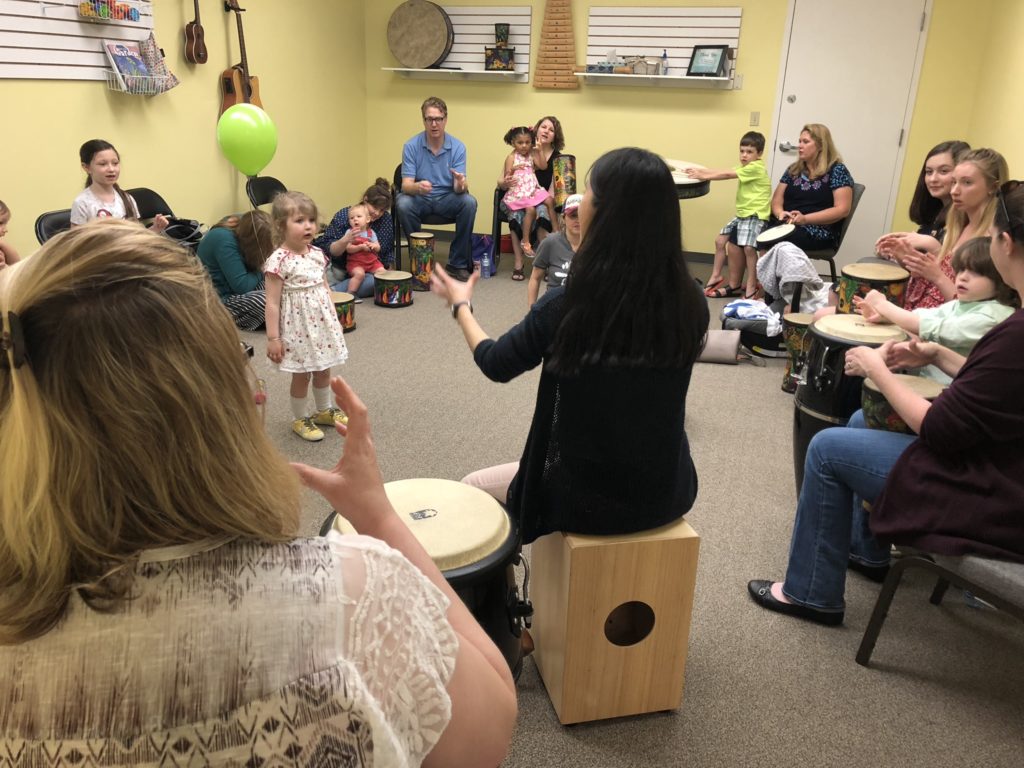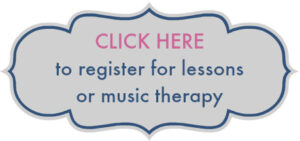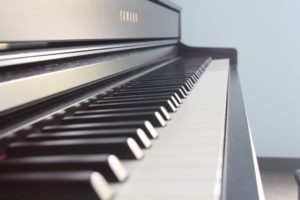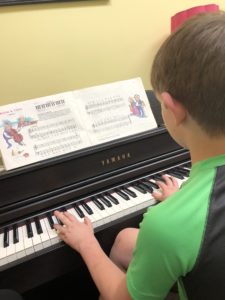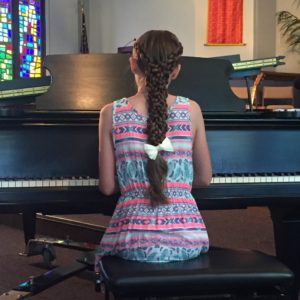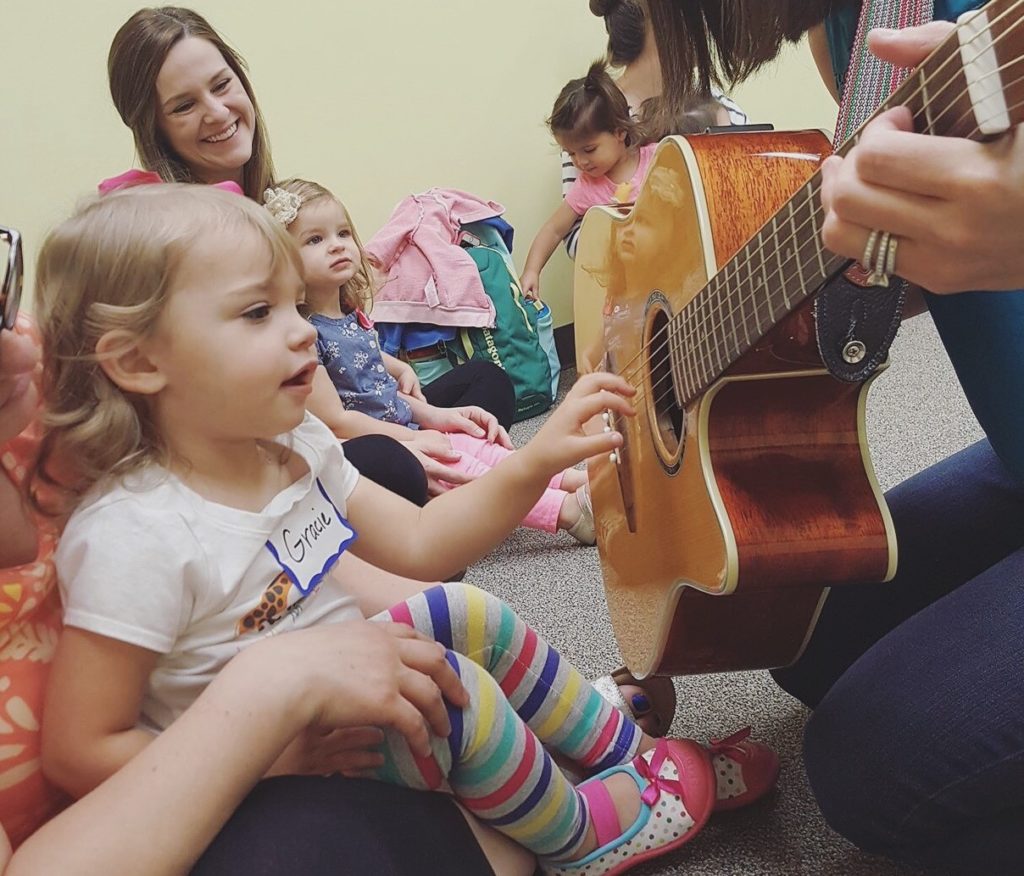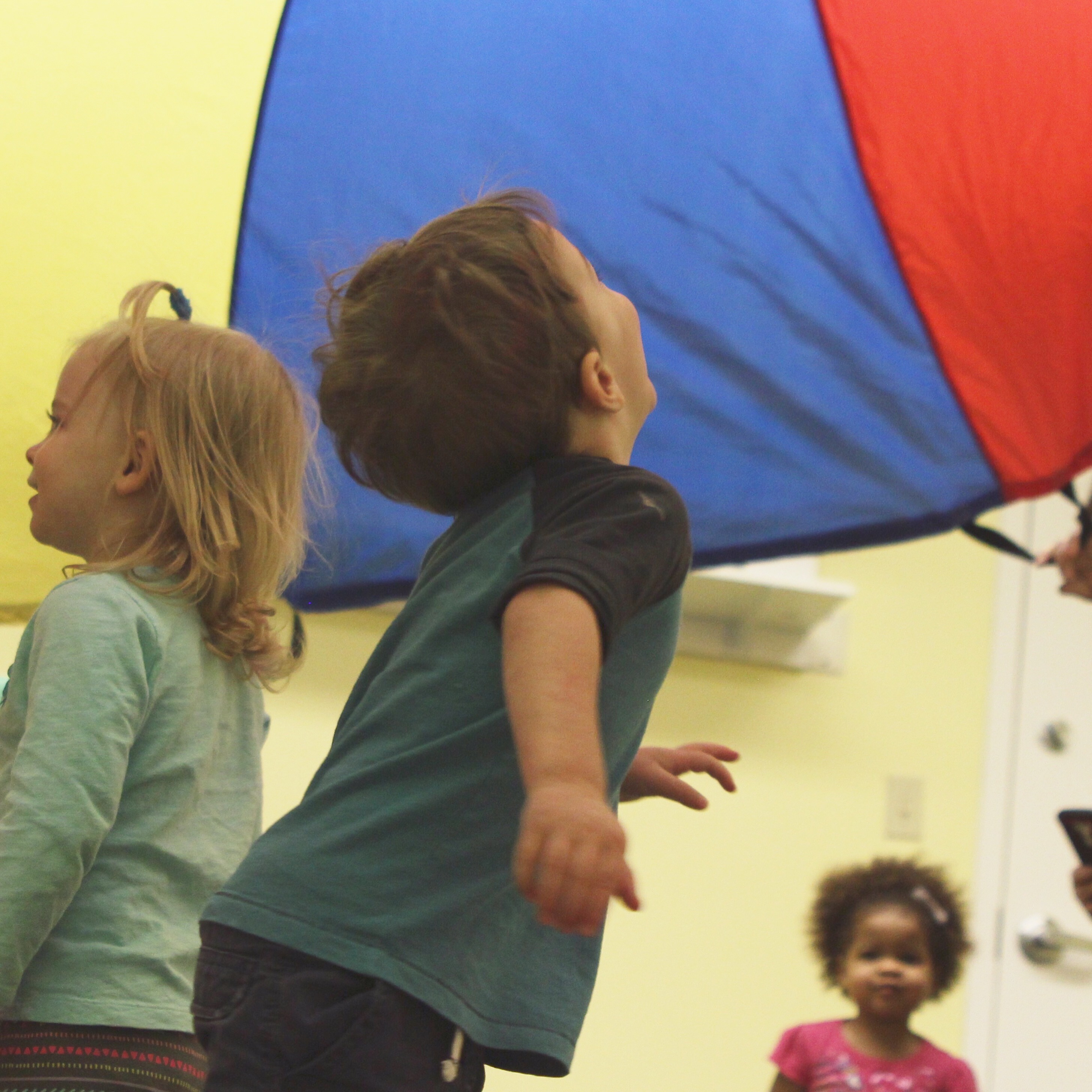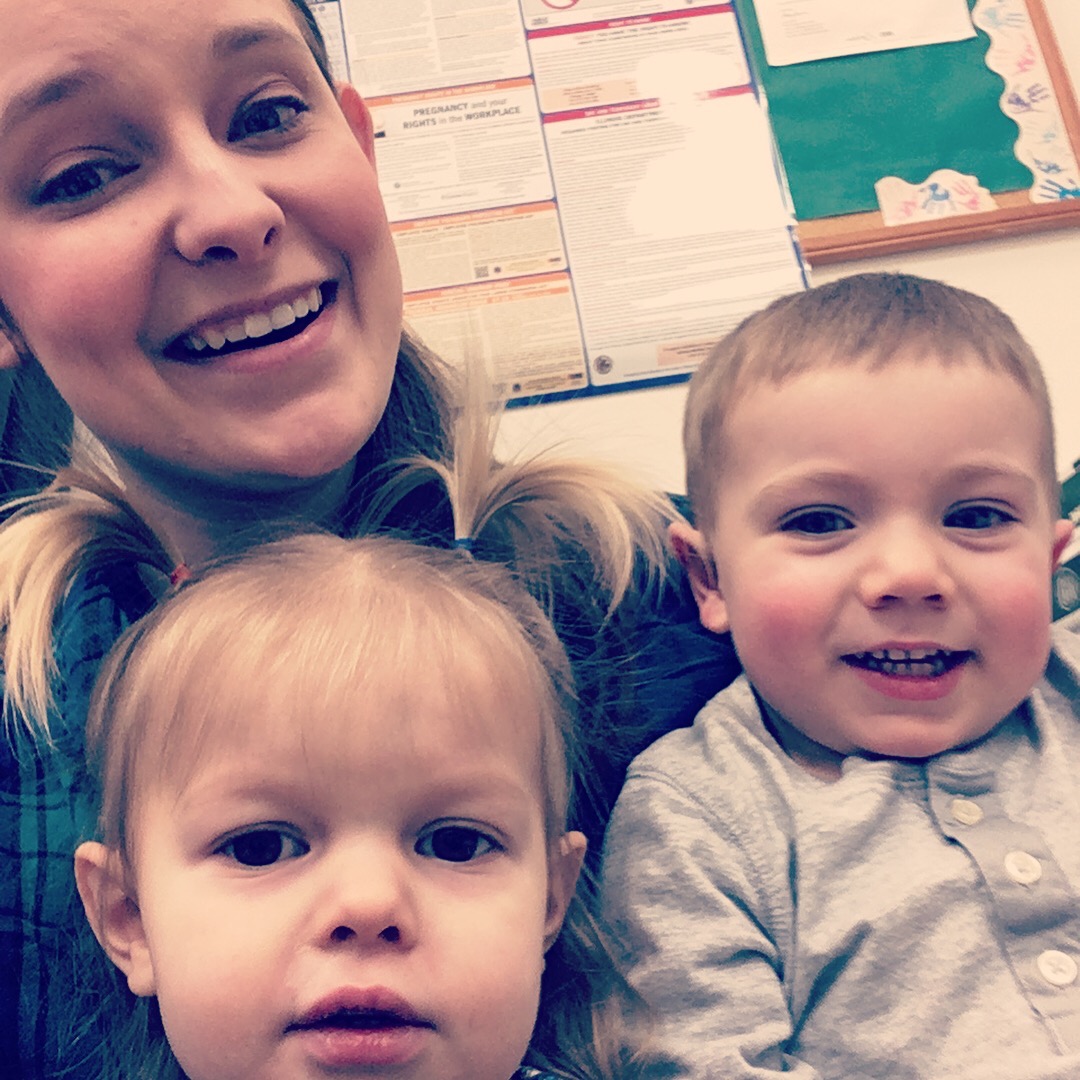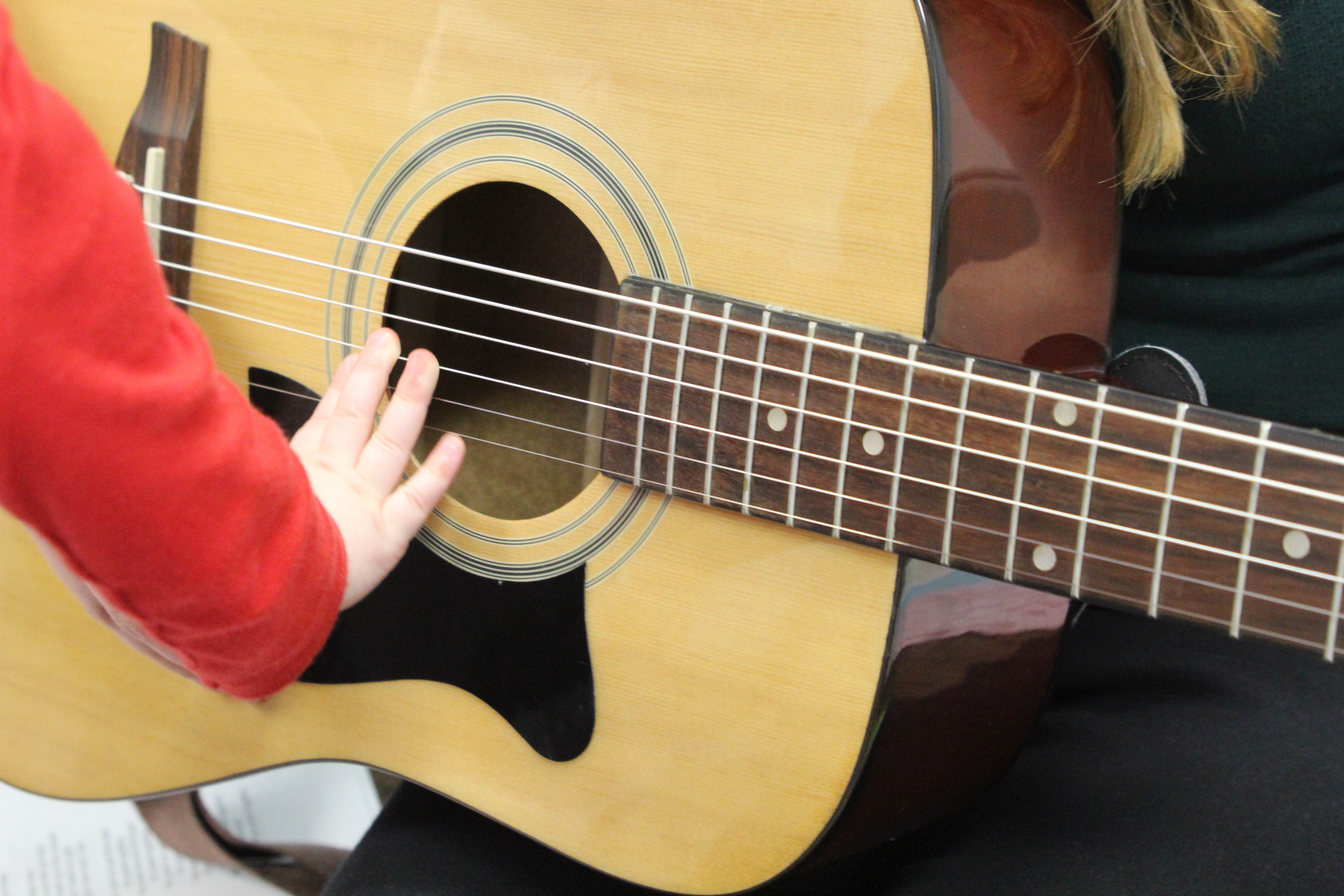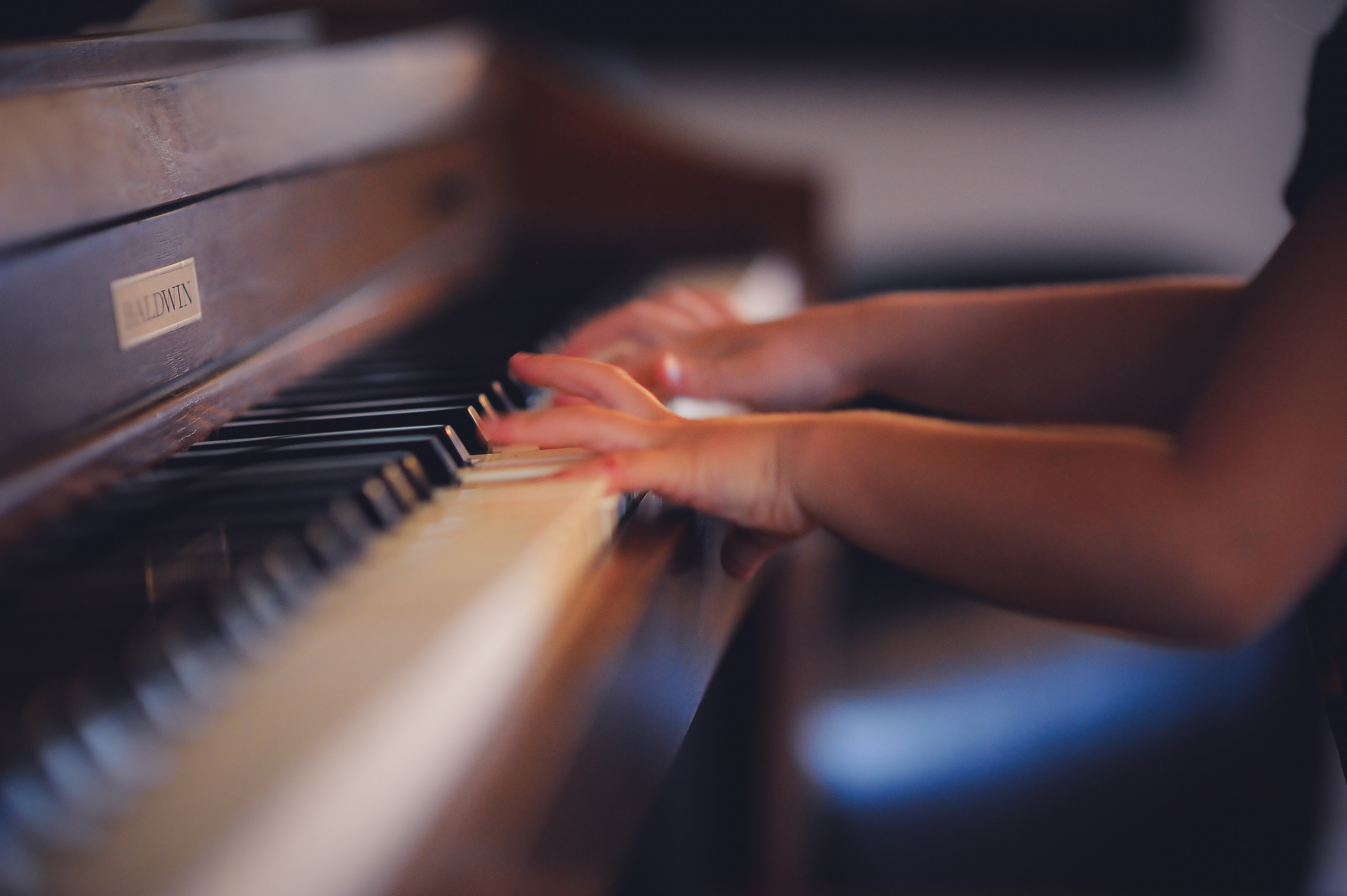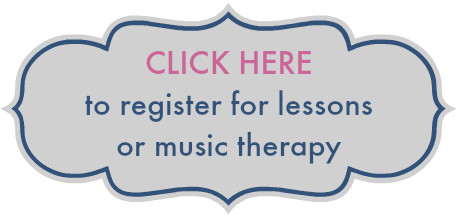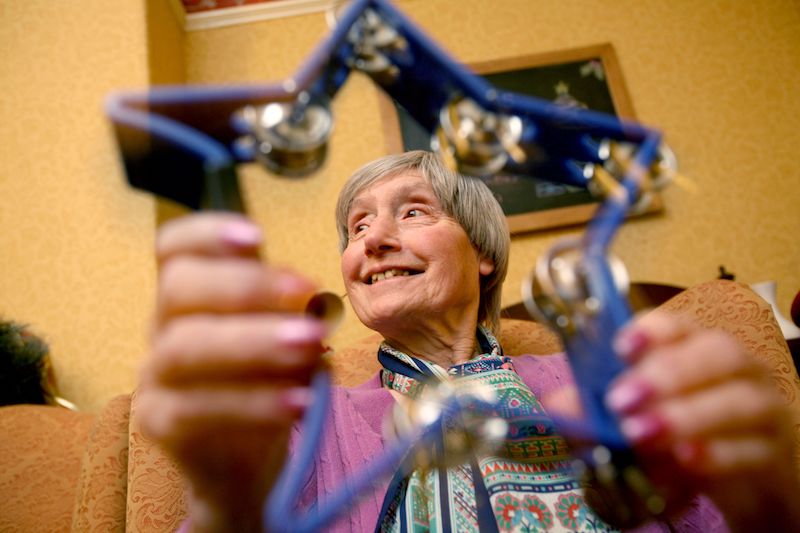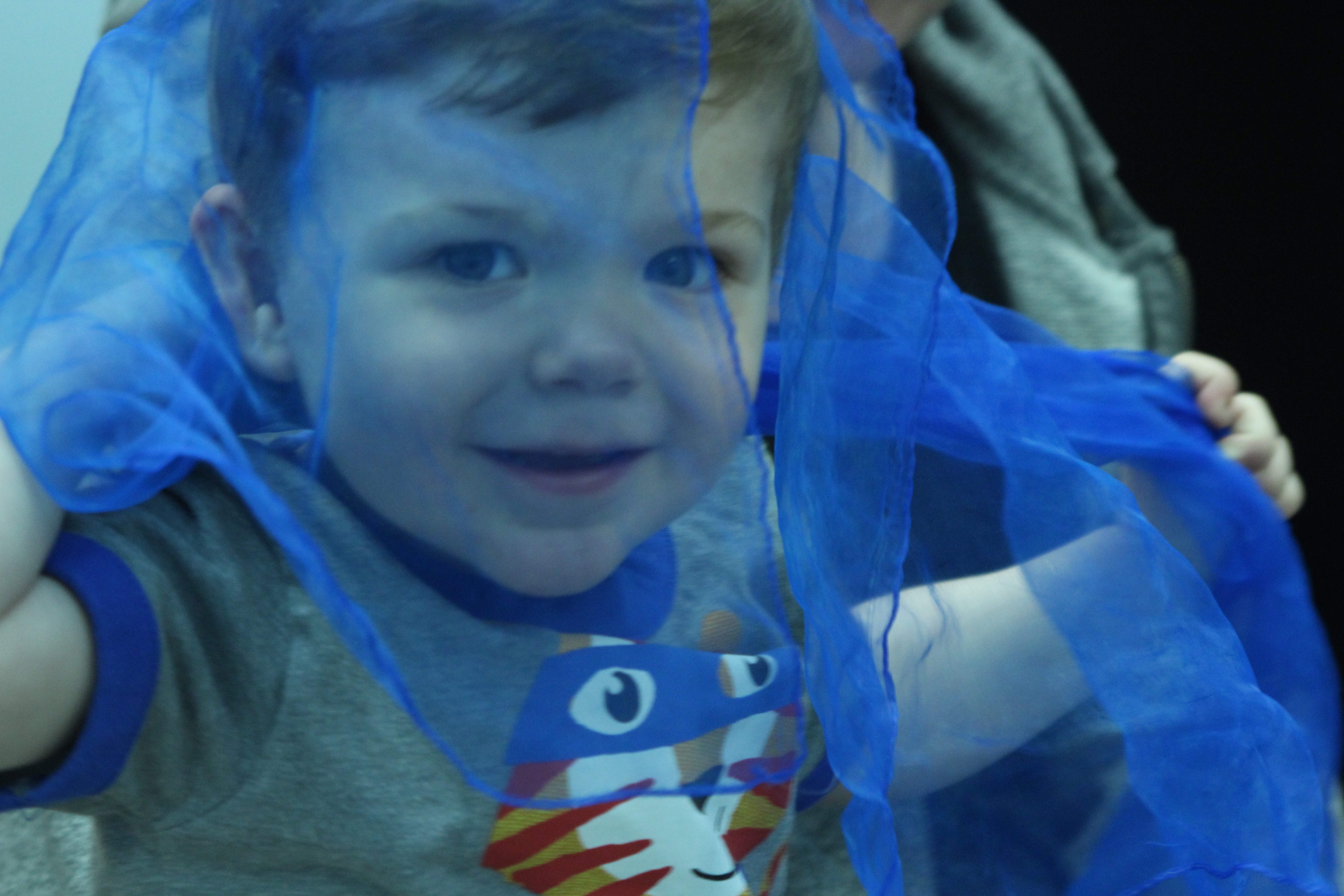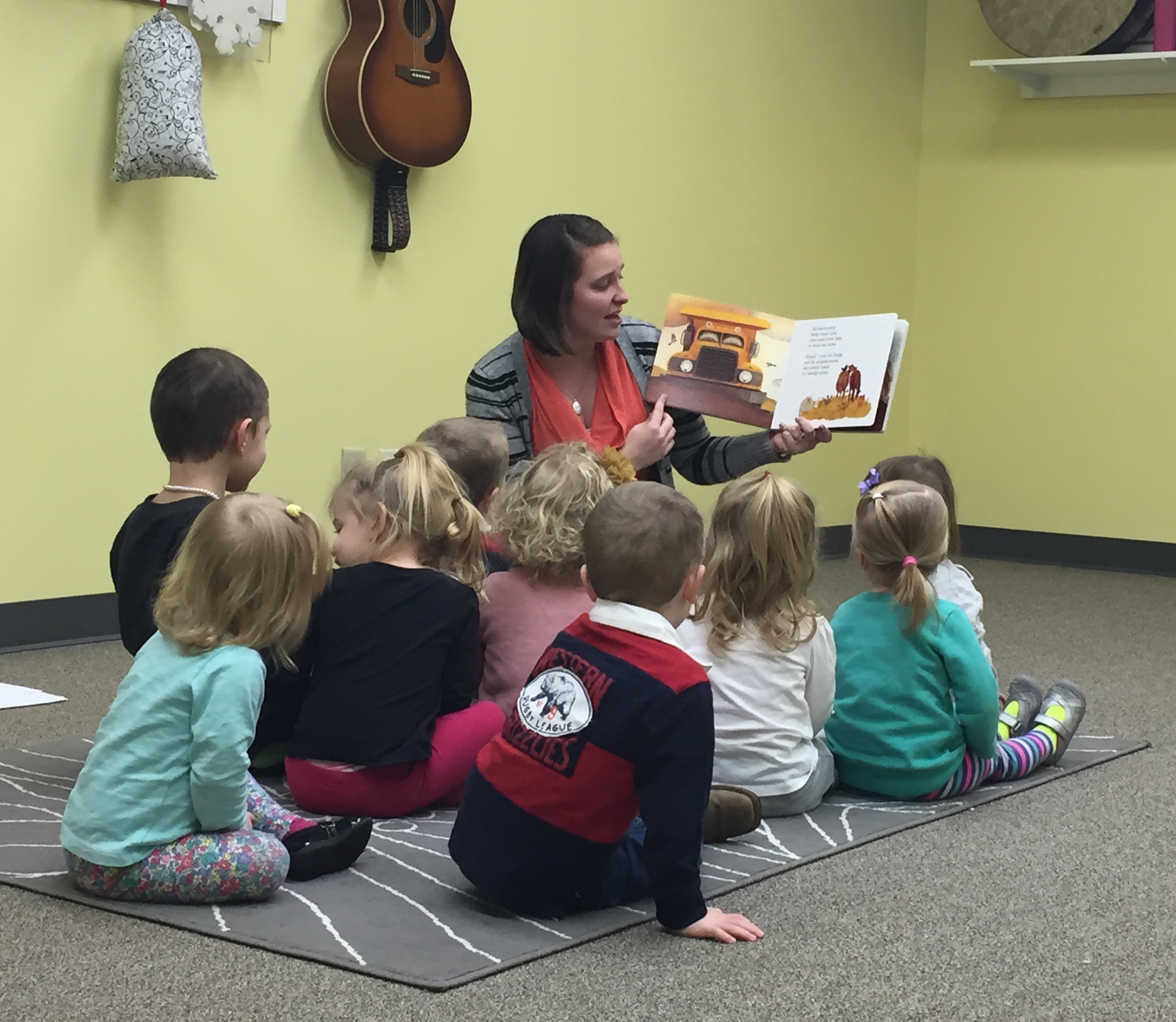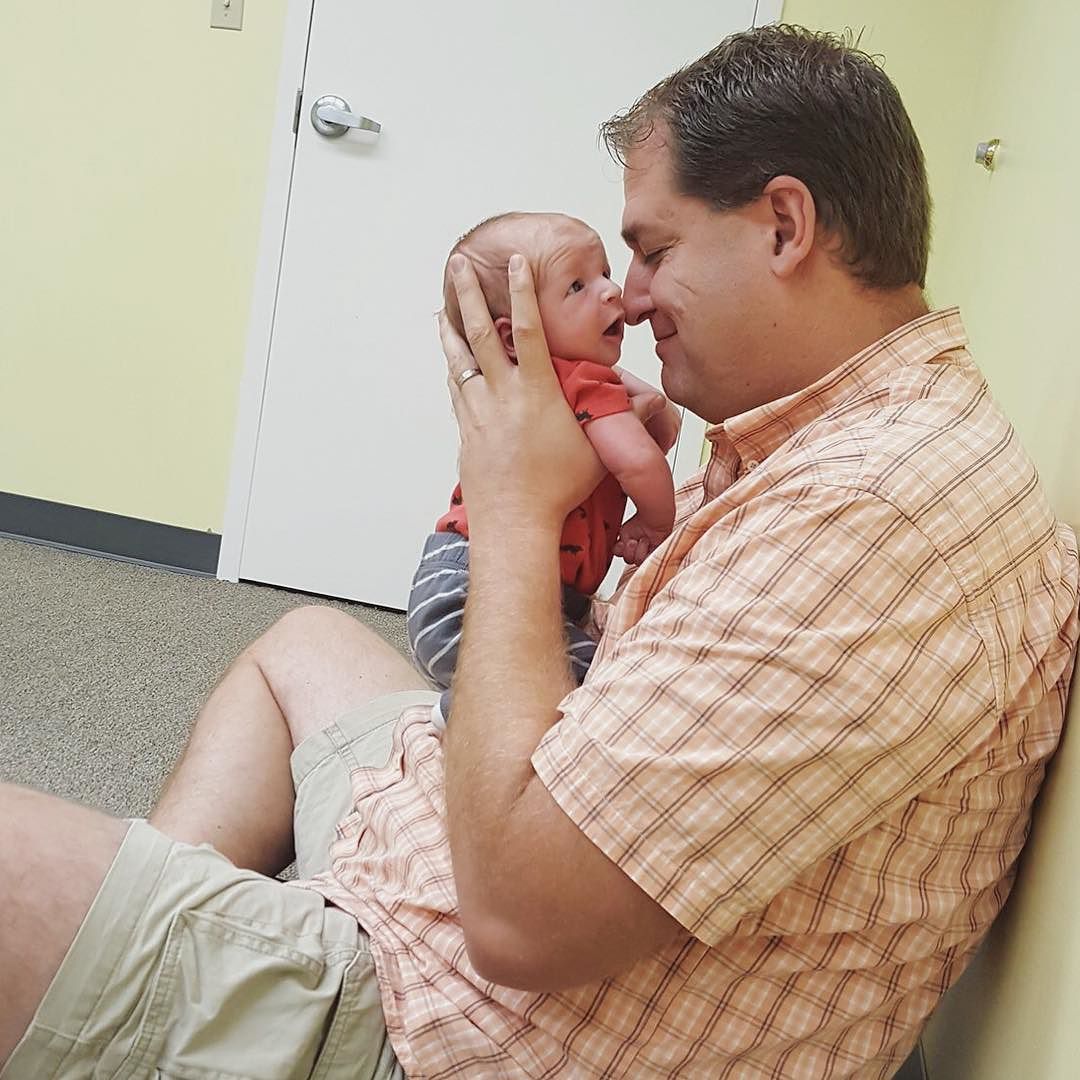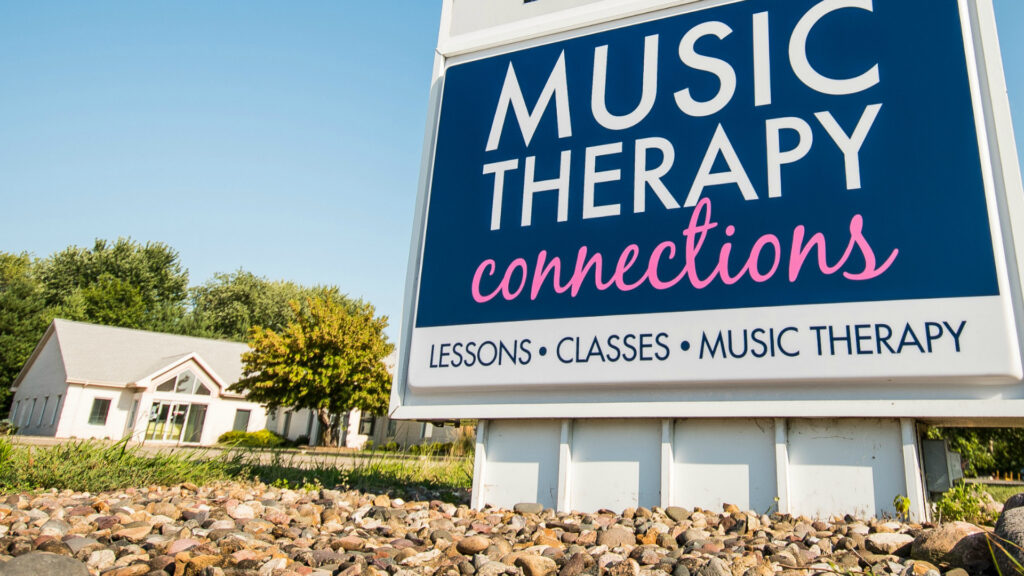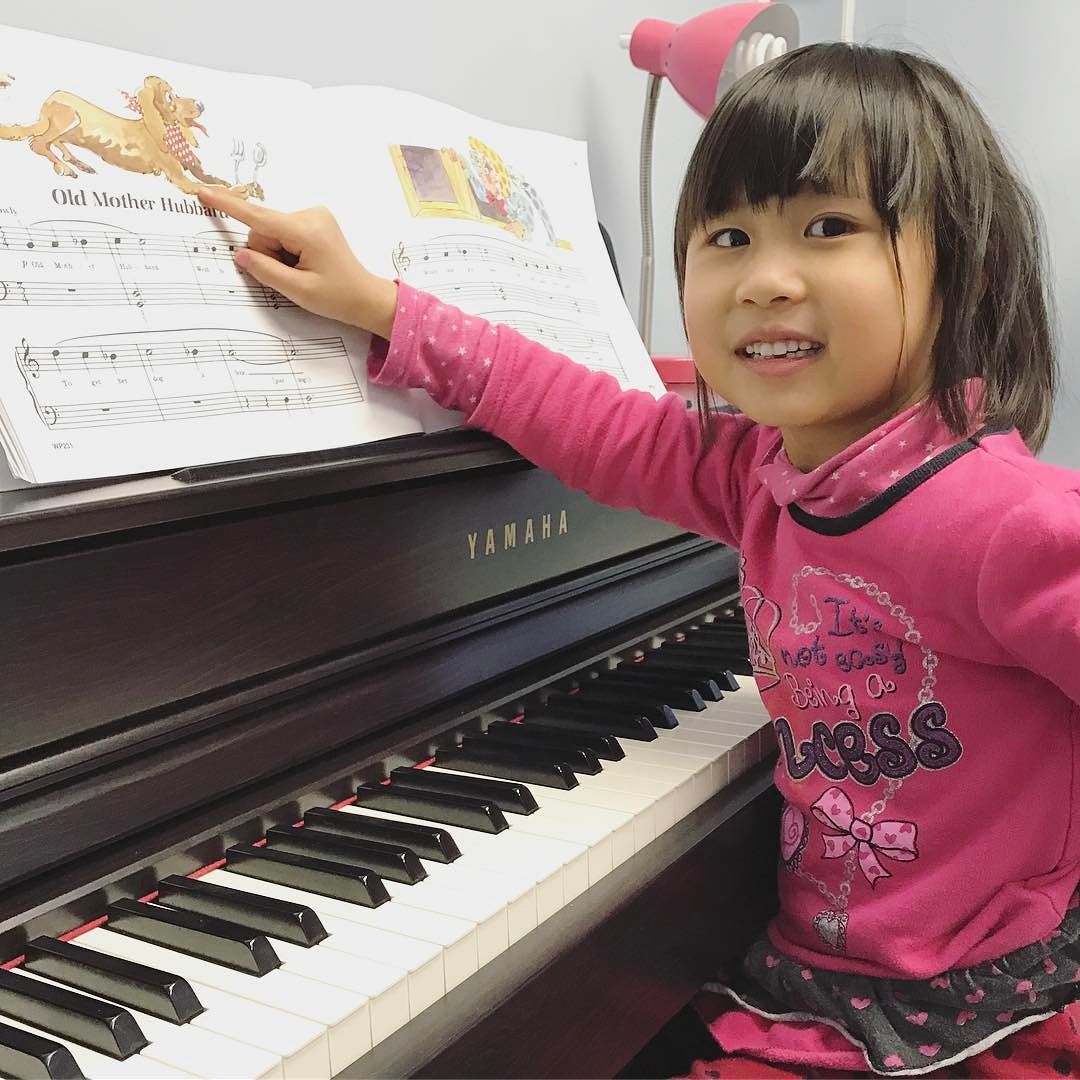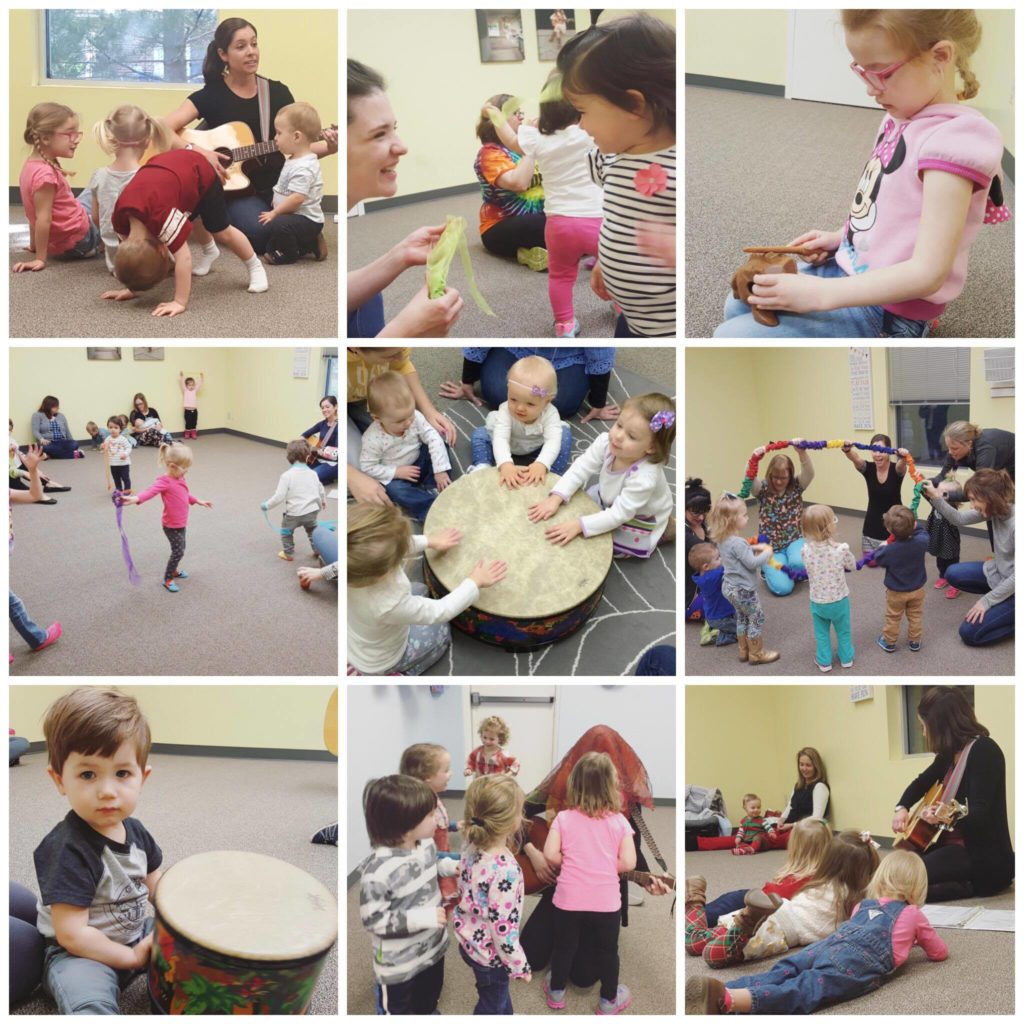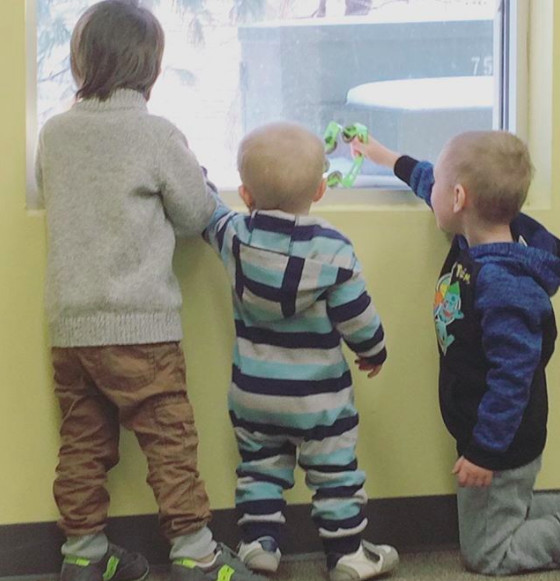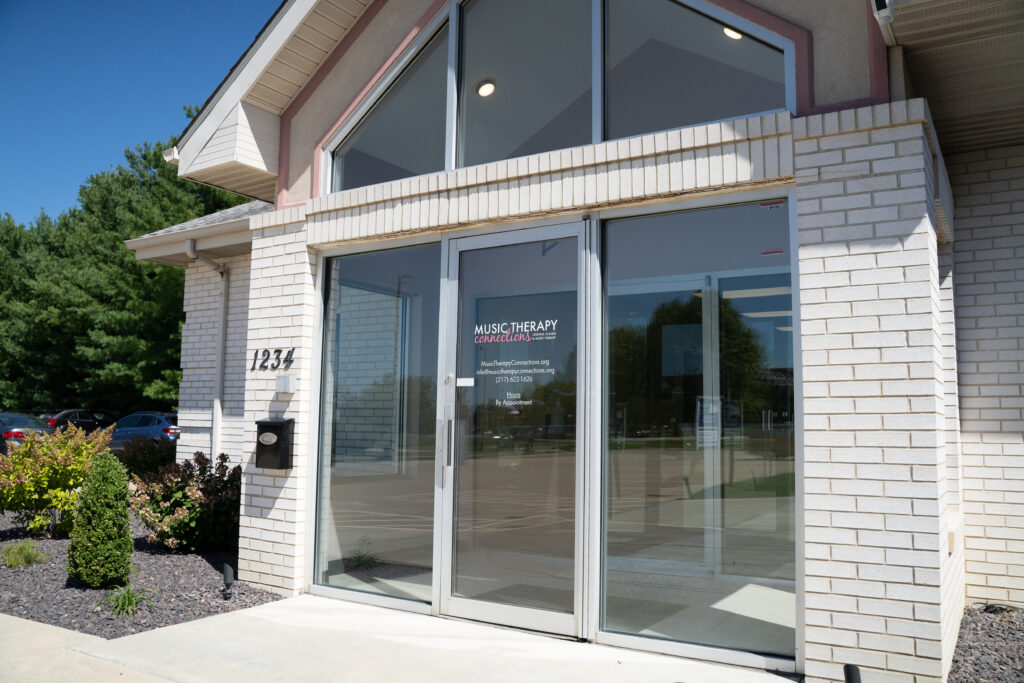by Laura Tam | May 17, 2018 | MTC
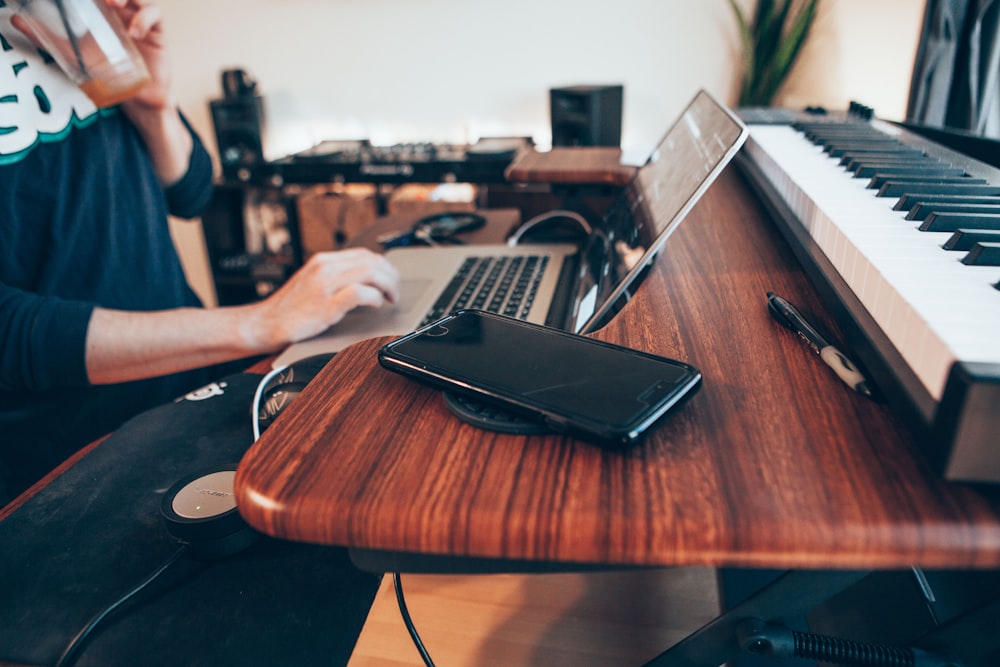
This past weekend, many of my music therapy colleagues celebrated the milestone of completing all academic coursework, and many are on the way towards starting internship soon.
As I reflect back on the different life transitions in my music therapy career, I can’t believe that it’s already been a year since I finished these milestones! A lot has changed since entering the “real world,” yet, I still see how some things I learned in internship continue to be relevant in my day to day as a working professional.
For me, internship was a season of self care, capacity stretching, and professional growth. These things have all stuck with me, and continue to be relevant in my work at Music Therapy Connections.
Self Care – With new assignments and experiences each week, internship is very fast paced. It’s so easy to be overwhelmed at all the new responsibilities, but through regularly journaling about my day, my reactions, and the struggles that I encountered, I began to see how important it was to be in tune with my inner thoughts and actively seek opportunities to cope with stressful situations in a healthy way.
For me, self care looks like setting time aside in my schedule or in my commute to mentally and emotionally transition from home life to work life. I also like to do things that remind me that my identity and purpose isn’t defined solely through music therapy, such as spend time to deepen my relationship with my family and friends, as well as exercise.
Capacity Stretching – As a student, you are usually doing music therapy once a week, and preparing and doing documentation for that one session for a couple of days. In internship, you are typically leading multiple sessions a day for five days a week, and decreasing prep and documentation time significantly.
While growth in capacity doesn’t happen overnight, it is something that is essential in the transition from internship to working life. Not only is it about growing capacity, but it’s also about becoming more comfortable with increasing efficiency with planning time. This is definitely something that I am still growing in, especially since I know things will only get busier!
Professional Growth – I love how internship not only prepares you to do music therapy, but to also interact and work with other professionals and other individuals who support your clients. Establishing effective work and professional habits and communicating with others is definitely a skill that I use every day to talk with parents, support workers, future contracts, and to the public.
That being said, there are some things from internship that I’ve since learned were specific to my internship season.
Constant accountability – Every week in my internship, I had time devoted to meeting with my supervisors to discuss any issues and to help me stay on track. Now that I am working, it is important that I take ownership of my work and take steps to develop areas in need even when I don’t have a supervisor to keep me accountable.
Access to Information – As an intern, I took advantage of my student status and utilized my school library’s database of research articles on a weekly basis. Now that I’ve officially graduated, I miss no longer having that access through my student account. I guess part of working in the real world is about letting go of student perks, eventually…
That’s all my post-internship thoughts for now.
Shout out to all the new interns, current interns, and post-interns who are all walking this music therapy journey with me! If you have any internship stories, I’d love to hear them in the comments below!
by Laura Tam | May 9, 2018 | Resources

This past Sunday, Music Therapy Connections hosted an open house, and it was a blast! We invited the Springfield community to step through our doors, meet our music therapists and teachers, and spend time making music together.
Seeing new faces and familiar faces connect with each other and explore our facility was such a thrill, especially with everyone being from all different walks of life.
One of my favorite moments during the open house was when we invited everyone into our big room for some group drumming. From little infants to teens, parents of young children to older adults, we shared the time exploring our creativity, playing together, and best of all, enjoying music.
I would love to share with you how we structured our drum circle to incorporate a wide range of ages, needs, and comfortability level.
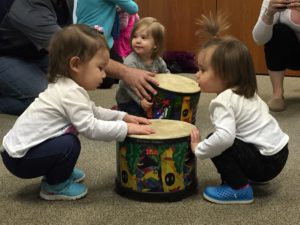
Drum Circle Age considerations:
- For our little ones, we used low floor drums and encouraged caregivers to sit on the floor so they would have a greater range of movement to support, hold, model, and do hand-over-hand movements with their young children.
- For young children who didn’t need the motor guidance of a caregiver, we encouraged participation and empowered their independence by giving them choices (i.e., Big drum or small drum? Floor drum or hand drum? Mallets or no mallets?).
- For our children, teens, and adults, we encouraged creativity by asking for options of how to play (i.e., Asking participants to come up with hand motions, asking participants whether they want to play fast or slow, etc.).
Comfortability Level Considerations:
- This might be the first time a lot of participants have ever played an instrument, let alone a drum! Encouraging choices for all participants is big. You should structure songs to include a variety of different styles, motions, volumes. Once everyone has a better idea of different options, structure the song to include parts where people can explore their creative side without feeling insecure or exposed.
- How can you do this? Have half the group tap a basic beat while the other half freely improvises and then have the two sides switch.
- Include songs that are have chants, sequenced portions, or repetition so that participants have a predictable structure to follow. Once everyone is comfortable with the familiar section, gradually add new components.
- I like to have a cycle of familiar/predictable sections, new sections, and then a return to familiar/predictable sections.
- Don’t forget to validate! A simple “I hear you!” or “Wow, I like your energy!” can go a long way in encouraging new players throughout.
- Drumming can be loud. Model as much as you can! Sometimes over explaining can overcomplicate things, and a lot of times, people can’t hear you over their own drumming. Try minimizing verbal explanation and instead, replace it with concise and direct language, or eliminate verbal directions all together and use your drum, exaggerated facial expressions, and exaggerated body language to motivate everyone to have greater focus and jump right in.
I hope you found these drum circle considerations helpful! If you’d like to share some drumming ideas with us, or ways you’ve adapted drumming experiences for individuals of all ages, we’d love to hear from you in the comments below!
And if you’d like to learn more ideas about how to incorporate drumming into your sessions, check out Kalani Music. For songs and chants that can be adapted for all ages, check out Ella Jenkins! These have been great resources and inspirations to me as I keep growing as a music therapist. Best of luck in your journey!

by Becky Waddell | May 6, 2018 | Lessons

With our spring recital right around the corner on May 12th, this is a great time to address practice habits. Are they necessary? What’s the point?
Here are some common dialogues I’ve heard:
- How long does my child really need to practice?
- Does my child need to practice every single day?
- My kids are too busy to practice.
- I’m too busy to sit down with my child.
- I keep forgetting to remind my child to practice.
- My child only has to study for a test the night before, so why can’t he just practice the day before/day of lessons?
{These are my own personal opinions. Every teacher is different and follows a different discipline when it comes to practicing.}
How long does my child really need to practice?
Practice time is determined by the age and skill level of the individual child. We never want to force a child to practice and we want the practice time to be enjoyable.
- For a young child, say 5 years old, a practice session may only last five minutes per day. Pre-primer piano books are child friendly with short exercises. Many books have CDs or digital recordings for home practice, which can be a great motivator if used with each lesson. I also like to encourage free time at the piano, which can include improvising, singing, playing a song by ear, learning a song by ear, and composing.
- The older child might practice for ten to twenty minutes per day as primer and level 1 piano instruction books tend to have longer exercises that require more repetition. This is the age we also see a fair deal of voice, ukulele, and guitar students. For voice, we simply encourage the child to sing! For ukulele and guitar, the instruction books are similar to the piano books in terms of exercise length. I love finding a child’s favorite song to learn during lesson time!
- As a child advances to higher levels and skill sets, practice times will need to be longer. Repetition is the key to learning, in music and in the education setting. Practice times are usually a minimum of 30-minutes per day.
Any assignments that are sent home will already be understood by the child.

Does my child need to practice every single day?
Yes and no. This is a tricky question. It all depends on the individual. I like to encourage my young students to practice 4-5 times per week. Learning music involves muscle memory. It takes time to coordinate the eyes and hands with what’s on the page. My older, advanced students are encouraged to practice every day.
My kids are too busy to practice.
Is there any point in the day when your child is playing video games on the television, computer, or tablet? Are you constantly trying to get your child away from electronics? Build the practice time into your schedule.
Are you running your child to various activities throughout the week? Pencil in that short amount of time on days when the schedule isn’t as full and keep it scheduled for the same times every week.
I’m too busy to sit down with my child.
Any assignments that are sent home should already be understood by the child. I personally do not send home assignments that might be frustrating. I like to create a slight challenge when applicable but never too far fetched. This is especially true for my more advanced students. I tend to make notes on assignment sheets for single hand practice or specific measures when an exercise or piece is difficult. The last thing I want to do is make practicing a negative experience.
I keep forgetting to remind my child to practice.
I hear ya! I forget things left and right. Thank goodness for calendars, reminder apps, notification sounds, etc…
My child only has to study for a test the night before, so why can’t he just practice the day before/day of lessons?
Learning an instrument takes time. We learn math skills slowly, first by counting, then recognizing the numbers, later learning addition, subtraction, multiplication, division, and on and on and on.
Music is the same. It takes years and years to master an instrument. The only difference between educational classes and music lessons is the time spent learning the material. Children are in school for at least 6.5 hours. That’s approximately 6.5 of educational learning, five days a week. Thank goodness for summer break!

A piano lesson is typically 30-minutes once a week. That means most learning must be done outside of the scheduled lesson time. Practice is an essential part of the process, and we are always willing to provide advice for how to help make that happen in your home.

by Alisabeth Hopper | May 4, 2018 | Class Registration, Lessons, Services

One day I entered the doors of Music Therapy Connections as a music therapy intern, and the next (after passing my board certification), I entered as music therapist. The entire building looked and felt different. Though I was nervous and still a bit unsure, I knew that I was exactly where I was supposed to be. It was easy for me to fall in love with what we do here.
I love that I have the opportunity to serve everyone from birth through adulthood and all of life. I have the pleasure of working with people in the lesson setting, group setting, and individual therapeutic setting.
I love that I am able to serve people of all ages and all abilities within these walls. Everyone needs a safe place to experience something meaningful, create a sense of purpose, and even just be heard. Providing that safe place is the heartbeat of what we do here.

For many of our students and clients, their Music Therapy Connections experience begins in our Listen & Learn for Little Ones class where children ages 0-3 explore music with their parents, grandparents, and loved ones. We focus on supporting their precious development and creating bonding opportunities for every family.

When our students are 3 years old and ready for the move, they often graduate to our Listen & Learn a Little More class! This class is still developmentally supportive, but we also continue to work on social skills, reading, counting and so much more! Plus, Listen & Learn a Little More is for children only. Parents can relax and listen to our preschoolers laughing and singing from the comfort of our waiting area.

And, of course, when you feel that your 4 or 5 year old is ready, they can graduate yet again to our pre-lessons class Listen and Learn Into Lessons. This course was made for our very active 4-7 year olds who want to learn a new instrument but aren’t quite ready to sit for a 30 minute lesson. Students will learn piano basics, rhythmic counting, musical genres, terms and application in a fun and interactive environment with peers.

Finally, when your young learner is ready, they can register for their very own individual lessons with one of our teachers specializing in a variety of styles and instruments. Students can learn to play ukulele, guitar, piano, or sing!
Keep in mind, our lessons are individualized. Whether you are an adult or fresh out of our Listen & Learn Into Lessons course, we will create an environment to facilitate your success, growth, and love of music.
To register for lessons, click on the link below. If you would like to learn more about Music Therapy Connections, what we do, and our various services, we welcome you to our Open House on Sunday, May 6th between 10:00 am and 4:00 pm for refreshments, fun activities, a drumming experience, and a giveaway you don’t want to miss!

by Laura Tam | May 3, 2018 | Resources
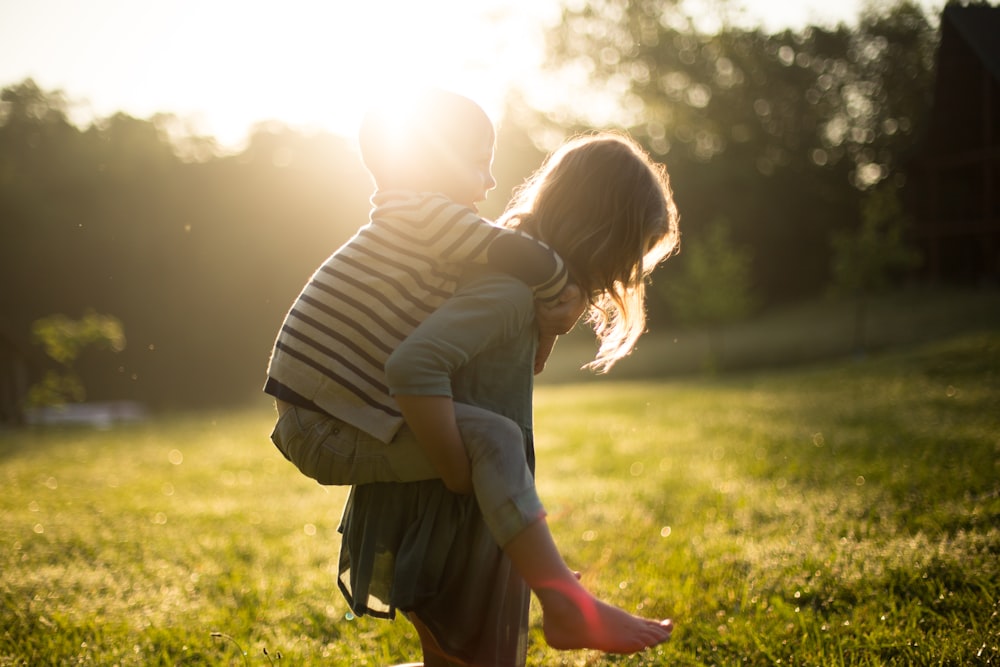
One of my client’s favorite things to do is choose a song to listen to or sing together. Recently, my client chose the song “Seven Years” by Lukas Graham. I had heard the song on the radio before, but never really took the time to listen to the lyrics. The song talks about memories the singer had at age 7, 11, and 20 years old, as well as his thoughts about turning 30, and later, 60 years old.
“Seven Years” was a very poignant song that helped me realize that at every moment, we can look back and see ways in which we’ve changed. In the present, we can reflect on the things we’re feeling and learning, while also looking ahead to who we might be in the future.
I love this song because it has certain ages already put in place where the client can share about the times when he or she was (or will be) 7, 11, 20, 30, and 60…or any age, for that matter.
As a music therapist, my mind immediately started forming ways in which I could turn this song (or similar songs that have to do with growing up) into a songwriting activity.
How I go about starting a songwriting activity:
With any songwriting activity, I like to begin with asking a mix of open-ended and closed questions. For “Seven Years,” some sample questions I may ask a client include:
- Can you remember the earliest memory you’ve ever had?
- What do you remember about being that age?
- How does that memory make you feel?
- What are some things about yourself that you think have changed?
- What are some things about yourself that that you think have stayed the same?
- What are some things about yourself that you think might change or stay the same in the next 5 years? 10 years?
As my client answers these questions, I write down the responses with the exact words that he or she uses. I then do my best to fit their responses within the song structure, and if I need to adapt their response, I always give them choices of how they prefer to rephrase their lyrics to fit the song.
My favorite moment during the songwriting experience is after new lyrics are written. This is when I get to sing through the song and see the look on my client’s face when their thoughts, feelings, and creativity become validated. Sometimes the moment we share together is so meaningful that I try to extend these songwriting experiences from session to session, or make recordings so that clients have something tangible to take away from our time together.
The best thing about songs like “Seven Years” is that they encompass the entire life span of the individual. Whether you are working with a young child, adolescent, young or older adult, songs similar to “Seven Years” can be an outlet for the client to share and process thoughts and experiences from their past, during the present, and as they look towards the future.
As I close out this post, I’ve included two more songs that would work well with songwriting throughout one’s life journey. Feel free to try out this songwriting intervention with your clients, and let me know in the comments your experience in using them in your sessions!
“100 Years” – Five for Fighting
“Seasons of Love” – from RENT
by Alisabeth Hopper | Apr 26, 2018 | Services

I remember the first time I led a music therapy session. My hands were clammy and my fingers trembled as I delicately placed them on the neck of my guitar. With my guitar slung over my body and all eyes on me, I was ready. I lifted my right arm and started strumming my first hello song.
Years later, I don’t remember the songs we sang or instruments we played but I do remember the way that they smiled. It was almost as though making music with these older adults breathed more life into them. That was the moment when I knew that there was no turning back. I was going to be a MUSIC THERAPIST.
Currently, I work with a variety of populations. I facilitate music classes for ages birth to 5 supporting their developmental goals. I provide individual music therapy sessions to children improving their reading and spelling skills, and children and young adults with autism to improve social, emotional, behavioral, and speech goals. I also work with children and adults struggling with their mental health and we work to improve and increase their coping skills in the safe and shared environment of music.
When I give my so-called elevator speech, it often goes like this…
“I am a music therapist! I have a bachelors degree in Music Therapy, have completed extensive training, and have a national board certification. I work with people of all ages and abilities and use music to improve their quality of life and reach their clinical goals in domains such as communication, academia, cognition, social skills, and more!”
It is so difficult to give people a real sense of what it is that I do every day and why it matters. So here it is: this is what I wish I could tell everyone about music therapy. These are the stories I wish I could share with every face on the street and every voice in the hallway. This is why music therapy matters. This is why I do what I do.

I was serving a class of young adults with varying diagnoses. This was a life skills classroom and about 1/3 of the students had meaningful spontaneous speech the rest did not. That said, when these students did speak we listened! With these students I worked on a variety of life skills, but an important part of my job was to hear them. I wanted to hear them, whether or not they were considered “verbal”.
I watched for subtle smiles, dancing, eye contact and any way that they were going to communicate to me that they were having a positive experience. I learned so much about my students in that classroom and in addition to the strides they reached toward their goals, we bonded as we made music every week.
In that classroom I had one student who always began and ended music with repetitiously saying “Mrs. Alisa, I’m happy!” over and over again. I would kindly respond to him and redirect him back to music. I had dismissed it as something this student probably did all of the time until one day I asked the support staff and she said, “No, he only does that for music”. My heart leapt when I realized that this particular student spoke little, but every week he made it a point to tell me that he was happy to create music together, learn, and grow.

In another instance, I have been facilitating developmental music classes for typical children ages 0-5 at a local day care. I have been seeing one particular student since he was two years old. At that time we were concluding our last session before our summer break. We would have three months before our fall groups started, and this student was turning five and entering kindergarten.
He knew when we sang that final goodbye song that this music class might be our last together. It was right after our goodbye song, the entire walk to his classroom he stomped his feet and said “Mrs. Alisa, I’m mad! I’m so mad!!” When we arrived at his door I knelt down in front of him and asked him why he was mad. He simply responded “I want more music”.
I consoled him by telling him that there will always be more music and that I would probably see him again. He gave me one, very tight hug before saying “Mrs. Alisa, thank you for taking me for music” and closed the door to his classroom behind him.

I hope that these stories help to illustrate what a music therapist can provide. I love my job because I feel that it gives me great purpose to give others great purpose. Of course it’s easy to say that I believe in music therapy because the research supports its efficacy. But there is something else here that you can’t see until you’re in it.
There is something about singing to your precious two year old in a music class, or hearing your four year old giggling while she’s dancing her heart out. There is something in music that makes it feel like a safe place to share our struggles with mental health, and find something that feels like healing. There is something indescribable in a moment where a client who is minimally verbal pulls his head from his chest, makes eye contact, and says “thank you”.
No matter how hard I try I can’t explain to you what is different about music therapy, or our adaptive lessons, or our music classes, but I can show you!
For more information on our music classes click here, and to register for lessons, adaptive lessons, or music therapy, click the image below! If you want to talk with one of our team members about what we do, we hope you’ll come to our Open House at 1234 Centre West Drive here in Springfield, IL on Sunday, May 6th! We can’t wait to hear from you!

by Laura Tam | Apr 25, 2018 | MTC

Psst…Do you have a loved one, child, or friend who enjoys music? Are you a teacher, administrator or other professional interested in additional community resources?
Come join us on Sunday, May 6th for an open house at Music Therapy Connections! We love sharing with you on the blog every week, but we’d love to connect in person even more.
That sounds awesome, but I have a packed schedule and I’m not sure if I can make it.
We completely understand that your weekend might be busy. No worries! Stop by anytime between 10am – 4pm. At 1 pm, we hope you can participate in an all-ages drumming experience for the chance to win our big giveaway!
What should I expect when I come?
There will be opportunities to enjoy refreshments, make your own instrument, explore our facility, and talk face to face with our music therapists to learn how we can best serve your needs — whether you are a parent, community member, teacher, or administrator. We can’t wait to meet you!
What can Music Therapy Connections do for me?
We are a team of music therapists and music educators who have a heart to serve all ages in our community. We love working together with schools, day cares, senior care facilities, and local families to design music programs that fit the needs of whoever may benefit from music therapy, music lessons, or adaptive music lessons.
Know someone in your life who might be interested? Bring your family, a friend, or colleague. Spread the word! All are welcome, and we’d love for you to join us!
by Alisabeth Hopper | Apr 23, 2018 | Services

We are often asked, “What age do you start lessons?” — and the answer is a bit complex. We recommend that most students start with piano, because it is a very visual instrument that helps students to transfer those skills to other instruments. But even our youngest pianists need to be able to:
- Say their ABCs
- Count to five
- Sit for a 30 minute lesson
We know that it is difficult for most students under the age of 7 to sit and attend to a 30 minute one-on-one lesson, so our team here at Music Therapy Connections has created the perfect solution.
Beginning in May, we are offering a pre-lesson class called Listen & Learn Into Lessons. This is an interactive music class teaching foundational musical skills including note reading, rhythmic execution, and basic piano skills. This class is perfect for your musically passionate young child who isn’t quite ready for individual lessons.

You may be wondering, “What if my child wants to learn guitar, ukulele, or voice?” This class is a great foundational learning experience for them! We encourage all of our students to find the instrument that they enjoy playing!
We know that internal motivation to practice and attend regularly comes from doing what you love. And our teachers here at Music Therapy Connections love teaching our students in their piano, guitar, ukulele, voice lessons and more. But most of all, we are gifted with the opportunity to instill a love of music into these young hearts.
Many of you may know that we just ended the Week of the Young Child, and we want to celebrate with you by helping your young child begin his or her musical journey. Click here to learn more about Listen & Learn Into Lessons.
by Laura Tam | Apr 17, 2018 | Services

Did you know that this week, April 15-21, is Week of the Young Child? At MTC, we would like to take the opportunity to celebrate the growth of our early learners, their teachers, and their families.
The period from birth to age 5 can go by in a blink of an eye, but when we take a step back to see just how many developmental milestones occur, how each child’s personality develops, and how many new experiences a child receives, we can’t help but feel lucky that we get to see our little ones grow and develop through music week to week!
So how can MTC serve your young child?
Listen & Learn for Little Ones is an early childhood music class for children ages 0-3 and their caregivers. The curriculum is comprised of both original and familiar songs that you can start singing along with at the very first class. Activities are designed based on specific goals and objectives. Skills that are addressed include (but are not limited to) fine and gross motor movement, rhythmic foundations, intonation, peer interaction, turn-taking, and academic concepts.
Listen & Learn A Little More is a next-step music class for children ages 3-5 without their parent or caregiver present. Activities are designed based on specific goals and objectives. Goals that are addressed include (but are not limited to) fine and gross motor movement, rhythmic foundations, intonation, peer interaction, turn-taking, and academic concepts. This class is intended to build on the skills introduced in our early childhood class.
Music Therapy is offered in individual and small group settings. Prior to beginning music therapy treatment, we talk with parents or caregivers to get a better understanding of the goals we will be addressing with the client. At this time, the caregiver (and client) can share music preferences and favorite activities so that our time together is as effective and enjoyable as possible. Each therapy session is tailored to the client’s (or group’s) specific needs and unique abilities.
Does my child need to have musical talent or music skills to benefit from music therapy?
Not at all! Everyone can benefit from music regardless of whether or not they have music skills prior to treatment. Some considerations that music therapists take into account when working with young children include:
- Does a child physically and emotionally respond more to musical stimuli than other stimuli?
- What individual developmental or sensory attention does this child need to positively engage with musical experiences?
- How can music play a role in supplementing the pre-academic skills of each child?
- How can music play a role in supplementing the developmental needs of each child?
However you may celebrate the Week of the Young Child, we hope that you will take some time to give a little extra love to parents and teachers of young children. From all of us at MTC, we appreciate you and your important role in raising up the next generation!
by Alisabeth Hopper | Apr 12, 2018 | Tips & Tricks

I don’t know about you, but all of my students are reaching a full-on, stir-crazy, please-just-give-me-some-space-to-run state. And I am right there with them.
It has been cold and dreary for months, and most little ones come into music excited to have time to play, explore, try new things, and dance. But our clients have so much pent up energy that they can’t be expected to contain themselves.
So, in an effort to recognize and empathize with those feelings, I have come up with a few ways to engage my clients under 6 in complex ways to increase positive behavior and self-expression…and I am ready to share them with you!
1. The Hallway Song – I have been using a hallway song for many years. It is short, repetitious, and helps my students to get from their classrooms to our music room successfully. Unfortunately, this time of year they start to get excited and turn into runners. These two-year-olds may be adorable, but as you well know they are very, very, fast!
In an effort to engage them significantly more, I have started using a movement song instead to get us back to class. I use “Sounds in the Woods” by Katey Kamerad. This song instructs us to walk, hop, gallop, and flap our wings like birds in the woods. This gross motor movement is a huge help in keeping my students on task through our hallway walk!
2. Use Behavior Mantras – At one facility I serve, I have heard teachers say the phrase “Walking feet, quiet mouths.” It is short, sweet, and right to the point. I use this mantra as a reminder to my students any time we stand, walk, or dance.
And what’s best is that the children already know it! So all I have to say is “In the hallway we have…” and they say “walking feet and quiet mouths” with pride beaming from their faces!
3. Movement is Your Greatest Asset – A few weeks ago, my preschool group was so excited that I could barely get all of them to follow directions at the same time. They were jumping and grabbing each other, which was bound to end in disaster. In an effort to give them what they desperately needed, we danced. We danced with minimal directives for 30 minutes. Our only rules were to keep our hands to ourselves, no screaming, and keep dancing! They loved it!
After thirty minutes we did a song with specific directions (i.e. put the beanbag on your head, etc.) and then moved into some yoga and stretching. At the end of this session, all 6 children quietly walked out to parents and told them about the fun they had. I threw out my original session plan, but everyone walked away happy and that is what really matters.
Hopefully some of my coping skills for this lingering gloomy weather will be helpful for you. I wish you all the best as we await the summer sun!


